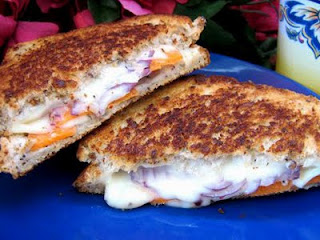
When it comes to a summer gathering, certain dishes are standbys. Baked beans and a variety of salads (macaroni, three-bean, potato, and fruit) are longtime favorites because of their predictable broad appeal and ease of preparation. They're also best made ahead so the flavors can develop, and they hold well.
Here, we offer traditional and updated versions of each of these dishes. All are examples of culinary Americana―a bonus if you're preparing them to accompany burgers or steaks for a Memorial Day celebration.
Baked Beans
Traditional: Amber Ale Baked Beans
Modern: Honey-Chipotle Baked Beans
Yankee-style baked beans date back to America's earliest days, when Native Americans showed settlers how to cook beans flavored with maple sugar and bear fat. Eventually, the newcomers used a pot instead of a pit and flavored the beans with molasses and pork fat. The dish was heartily embraced by early Bostonians as a Sabbath meal―so much so that the city became known as Beantown and the dish, Boston baked beans. Honey-Chipotle Baked Beans combines molasses with smoky Tex-Mex chipotle chiles to incorporate new and old flavors.
Potato Salad
Traditional: All-American Potato Salad
Modern: Roasted Potato Salad with Mustard Dressing
At least three nationalities brought different versions of potato salad to America. The British and French favored cold potato salads (the French version dressed in a mustard and tarragon-enhanced vinaigrette), while 19th-century German immigrants enjoyed their hot potato salad made with a vinegar-based dressing and bacon. American cooks later improvised with mayonnaise, sour cream, sweet pickles, celery, hard-cooked eggs, and other enhancements.
Three-Bean Salad
Traditional: Three-Bean Salad
Modern: Zesty Three-Bean and Roasted Corn Salad
We also likely have German immigrants to thank for the ubiquitous three-bean salad. Although the American version, made with green beans, chickpeas, and kidney beans marinated in vinegar dressing, reached its peak of popularity in the 1950s and '60s, food historians say it's a direct descendant of German Bohnensalat (bean salad).
Fruit Salad
Traditional: Summertime Fruit Salad with Cream
Modern: Peaches and Mixed Greens Salad
Fruit salads also have a long history in this country. Early recipes from the mid-19th century call for fresh fruit sliced, layered in a bowl, dusted with sugar, and doused with brandy or rum. These liquor-soaked versions became known as fruit cocktail―a name that would suit Chambord-enhanced Summertime Fruit Salad with Cream. There are regional fruit salads, too. Popular in the South, ambrosia combines oranges, pineapple, shredded coconut, and pecans and is served as a side or dessert. The Waldorf salad, a blend of apples, celery, and walnuts in a mayonnaise dressing, was first served at New York City's Waldorf-Astoria Hotel in the 1890s.
Macaroni Salad
Traditional: Macaroni Salad with Bacon, Peas, and Creamy Dijon Dressing
Modern: Rotini Salad with Kalamata Olive Dressing
Another mayonnaise-dressed favorite is the macaroni salad, which debuted in the 1950s. Early incarnations paired elbow macaroni with chopped olives, hard-boiled eggs, and pickles in a mayonnaise-based dressing. By the '80s, vinaigrette-dressed salads with rotini, penne, seashell, and other pasta shapes and crisp-tender vegetables (similar to Rotini Salad with Kalamata Olive Dressing) had become salad bar regulars.
What most of these sides share, along with enduring popularity and prep-ahead convenience, are simple ways to make delicious use of summer's produce. You may want to prepare a double batch, since people are sure to want seconds.








